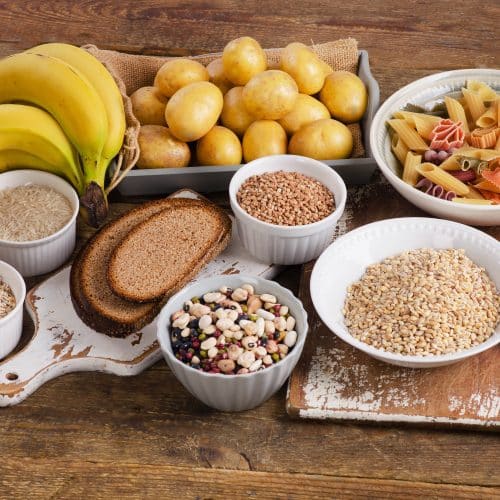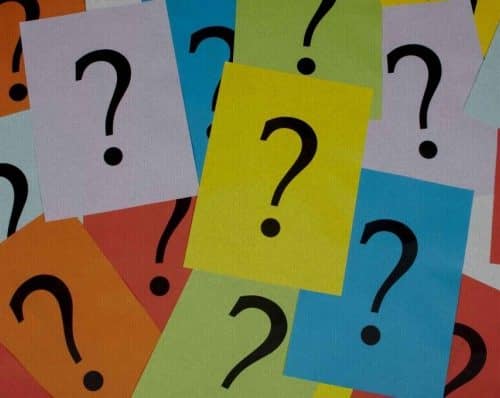
The next time you’re in a grocery store, look around you. I’ll bet you’re surrounded by carbohydrates — fruits, vegetables, pastas, breads, pastries, cookies, candy, milk, chips, crackers, ice cream, cereals, syrups, jellies, honey, and sugar sweetened beverages. Yep, they’re everywhere.
Carbs are a good thing — some of my best friends are carbs! But, many of us eat too many, partly because we’re not as carb savvy as we think and we may be taking in more carbs than we realize. So, here’s the 411 on carbs and what you need to know if you decide to cut some from your diet:
What counts as a carb?
Carbohydrates are about more than just starches. They also include sugars and fibers. Sugars are often added to foods during processing, but they can be found naturally in fruits, milk, and vegetables. You may be surprised to know that even though a vegetable like broccoli contains no starch, it is still counted as a carb because it contains fiber and natural sugars.
One-half cup of steamed broccoli or other non-starchy vegetable has about 5 grams of carb, while ½ cup plain potato has about 15 grams carbohydrate. That means you can eat 1½ cups broccoli and get the same carb bang for your buck as eating ½ cup potato.
We think of milk as being a good source of protein – and it is – but one cup also has 12 grams of carb or almost 1 carb serving. If you’re a latte fan or regularly have cereal with milk, you need to be sure to count those carbs, too.
What counts as a serving?
A serving is 15 grams of carbohydrate. One small slice of bread or half of a hamburger bun is 15 grams of carb which means a sandwich or hamburger will have at least two carb servings without counting any fillings or condiments. A 4-ounce bagel has about 60 grams of carb or 4 carb servings. Because portion sizes can vary, it’s important to read labels. You want to find out two things – what is the serving size listed on the package and how many grams of total carbohydrate does that serving have.
How many carb servings are appropriate?
Experts say you need a minimum of 130 grams of carbs daily for proper brain function. That’s about 9 servings of carb. The USDA recommends that between 45-65% of the total calories we eat each day be carbohydrates.
Based on a 2000 calorie-a-day diet, 55% (the midpoint of the recommendation) would be about 1100 calories from carbs. Each gram of carb has about 4 calories, for 275 grams of carb or 18 carb servings. That may sound like a lot, but remember servings can add up fast. For example, 1½ cups of cooked rice is 5 carb servings.
You think you want to cut carbs?
If you decide to cut carbs, first determine how many carbs you’re eating on average. An easy way to do that is to use the USDA’s SuperTracker tool. Then, examine what you’re eating and decide how you can make substitutions or reduce portion sizes. For example, you’ll probably enjoy your tuna sandwich just as much by eating it open face with a knife and fork instead of having it on two slices of bread. Another great strategy is to choose foods or beverages sweetened with no- or low-calorie sweeteners. They can really help keep the carb – and calorie — count down without sacrificing taste.
 Ellen Stokes, MS, RD, LD is an award-winning video producer, director, and writer in addition to being a registered dietitian. Ellen writes and creates videos about nutrition education, food safety, menu planning, grocery shopping, and healthful cooking on a budget. Ellen has worked with organizations and companies including the Partnership for Food Safety Education, the University of Georgia Food Science Department, and Golden Cuisine. Ellen formerly worked for CNN as a writer and producer and has taught food safety online for Georgia State University and she teaches nutrition to fledgling chefs at the Art Institute of Atlanta. Check her out on Twitter @EllenS_RD.
Ellen Stokes, MS, RD, LD is an award-winning video producer, director, and writer in addition to being a registered dietitian. Ellen writes and creates videos about nutrition education, food safety, menu planning, grocery shopping, and healthful cooking on a budget. Ellen has worked with organizations and companies including the Partnership for Food Safety Education, the University of Georgia Food Science Department, and Golden Cuisine. Ellen formerly worked for CNN as a writer and producer and has taught food safety online for Georgia State University and she teaches nutrition to fledgling chefs at the Art Institute of Atlanta. Check her out on Twitter @EllenS_RD.




